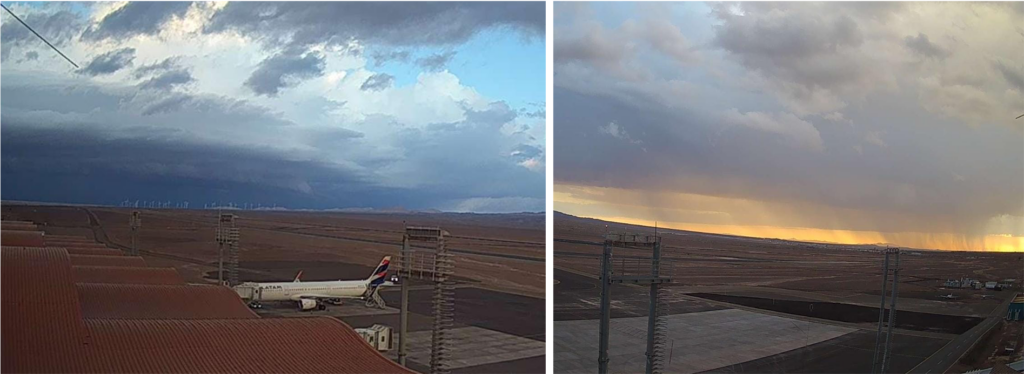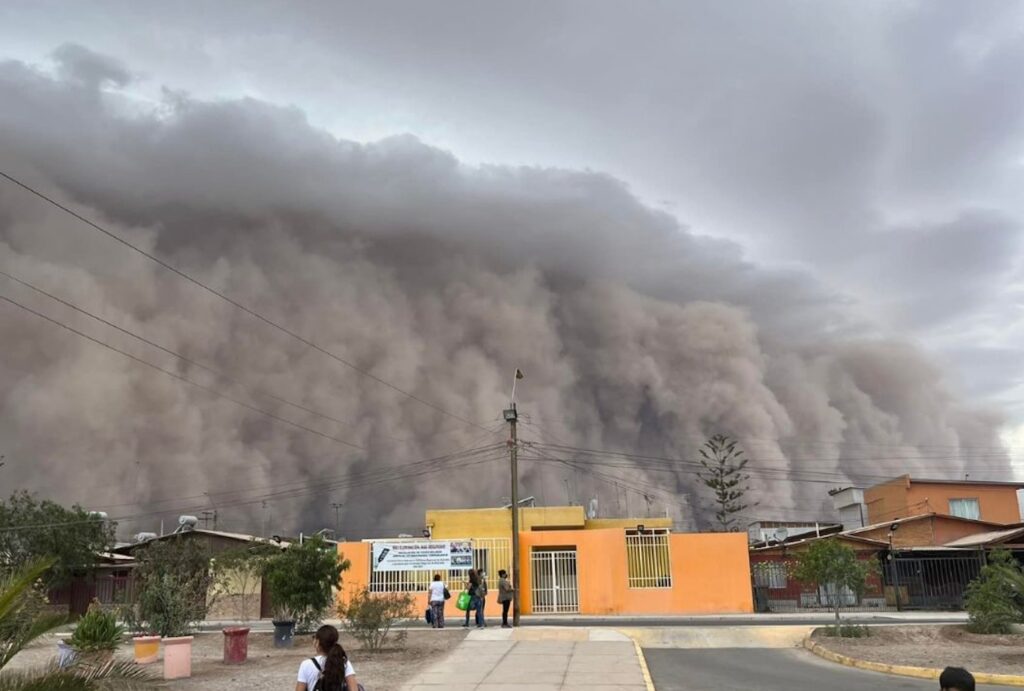The Atacama desert is one of the driest places in the world. However, most of March 2022 experienced humidity, clouds, and even rainfall. You don’t believe us? Here, we collected some evidence of this strange month in the Atacama.

In the middle of this dry desert, rain bands were observed on March 9 2022, near a location called Pica (20ºS, Tarapacá Region), around 1100 m above sea level and in the core of the Atacama. During that day, between 0.8 and 5.2 mm were recorded across the desert in different weather stations, with some thunderstorms, showers, drizzle, and plenty of clouds.
On March 16 2022, storms developed once again in the Atacama, this time near the major city of Calama (22.5ºS, Antofagasta Region), producing heavy rainfall, floods, and some damages on houses and roads. In less than 2 hours, rainfall accumulated between 1.2 and 7.2 mm in the city. The next pictures were taken at the city airport (El Loa) and show the presence of a huge convective system (left) and rain bands (right). In fact, the roof of the city airport was damaged due to the downpour.

The next day, on March 17 2022, new storms developed with even more intense rainfall, accumulating up to 15 mm near the city of Diego de Almagro (26ºS, Atacama Region). However, the story does not end here. In addition to the thunderstorms, a huge sandstorm was observed crossing the Atacama valleys, engulfing several towns (see the next picture) and capturing the attention of the whole country. Even more unusual than rainfall, sandstorms of this magnitude are rarely seen in the Atacama.

We know that any kind of storms and rainfall are originated from water vapor. Because the Atacama is so dry in terms of humidity, we usually don’t observe any hydrometers in its inner core. However, the events described in this post highlight the presence of more humidity than normal. What we do not know in this matter, for example, is how much water vapor excess was observed? Why the month of March 2022 was more humid than expected in the Atacama? Where does this humidity come from? How the humidity is spread in the desert and interact with the topography? Thus, some questions remain unanswered yet, but future works in our working group will try to unravel this mystery.
